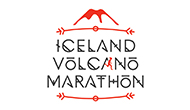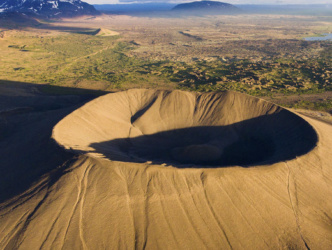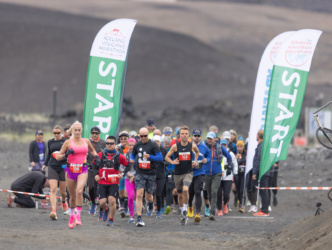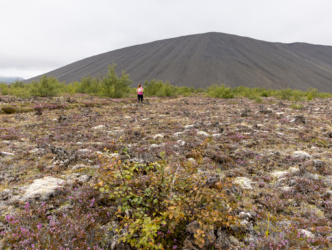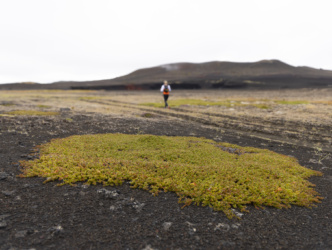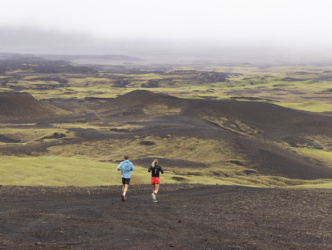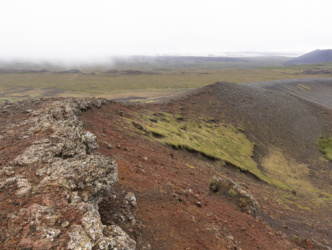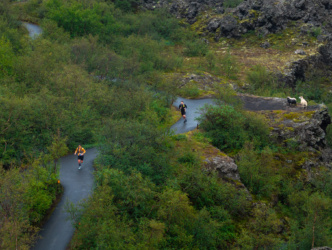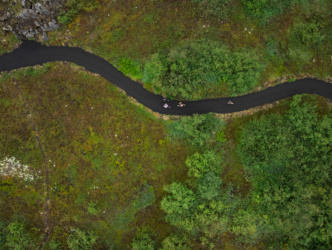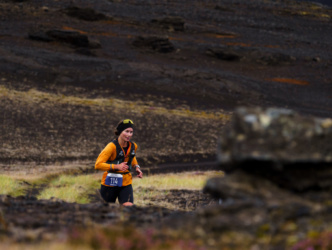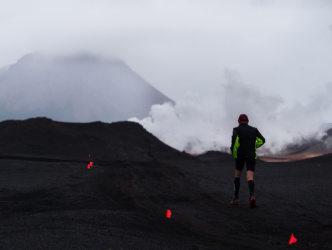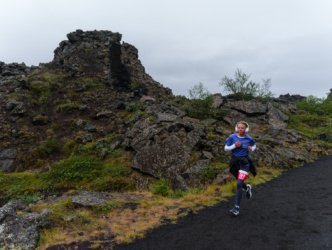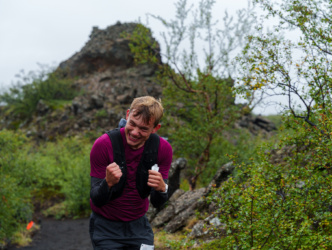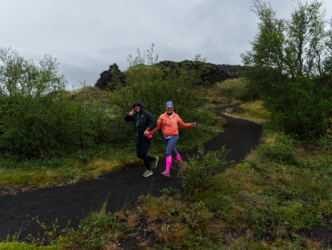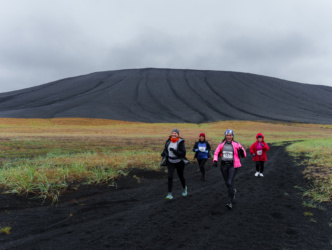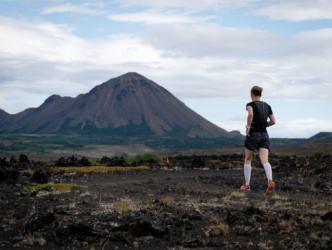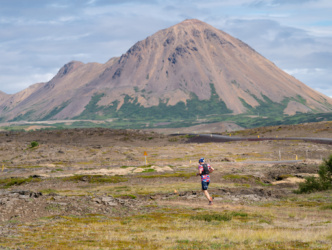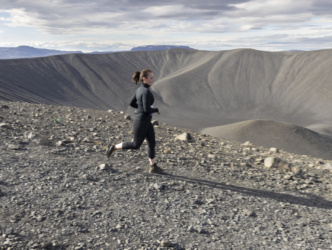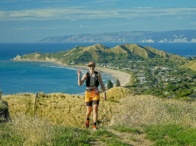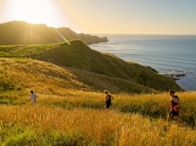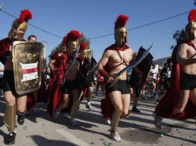WELCOME TO ICELAND
The Iceland Volcano Marathon takes place in Mývatn in northern Iceland, where the North Volcanic Zone splits the American and Eurasian continental plates. Still an active volcano area, this area is replete with volcano craters and steaming geysers.
Travelling Fit is offering a 6 day / 5 night package with 4 accommodation options and guaranteed race entry. The first night will be spent in Reykjavík and the other four nights in Mývatn, near Húsavík, giving you ample opportunity to explore this unearthly landscape – you will visit Europe’s largest waterfall, hike through the castle-like lava formations of Dimmuborgir, and take in the stunning nature surroundings of Mývatn, amongst many other things.
Whilst in Iceland, you also have the opportunity to purchase different day tour excursions which include:
- Golden Circle Tour (from Reykjavik) – 25 Jun 2025
- Geothermal Nature Baths – 28 Jun 2025
- Majestic Waterfalls – 29 Jun 2025
- Whale Safari – 29 Jun 2025
- Lofthellier Ice Cave – 29 Jun 2025

- Packages Include
- Guaranteed Race Entry (Runners Only)
- 1 night accommodation in Reykjavik
- Check in: 25 June 2025
- Check out: 26 June 2025
- 4 nights’ accommodation in Myvatn
- Check in: 26 June 2025
- Check out: 30 June 2025
- Return transfers from Reykjavik City to Myvatn to Reykjavik City/Airport
- Meals as per the itinerary
- Guided tour “Mývatn Highlights”
- Return transfers to/from the start and finish line
- Celebration Dinner including transfers
- English speaking tour leader
- Personalised Travelling Fit Running Top
exclusive to Travelling Fit clients
PACKAGE FLYERS
PACKAGE PRICES
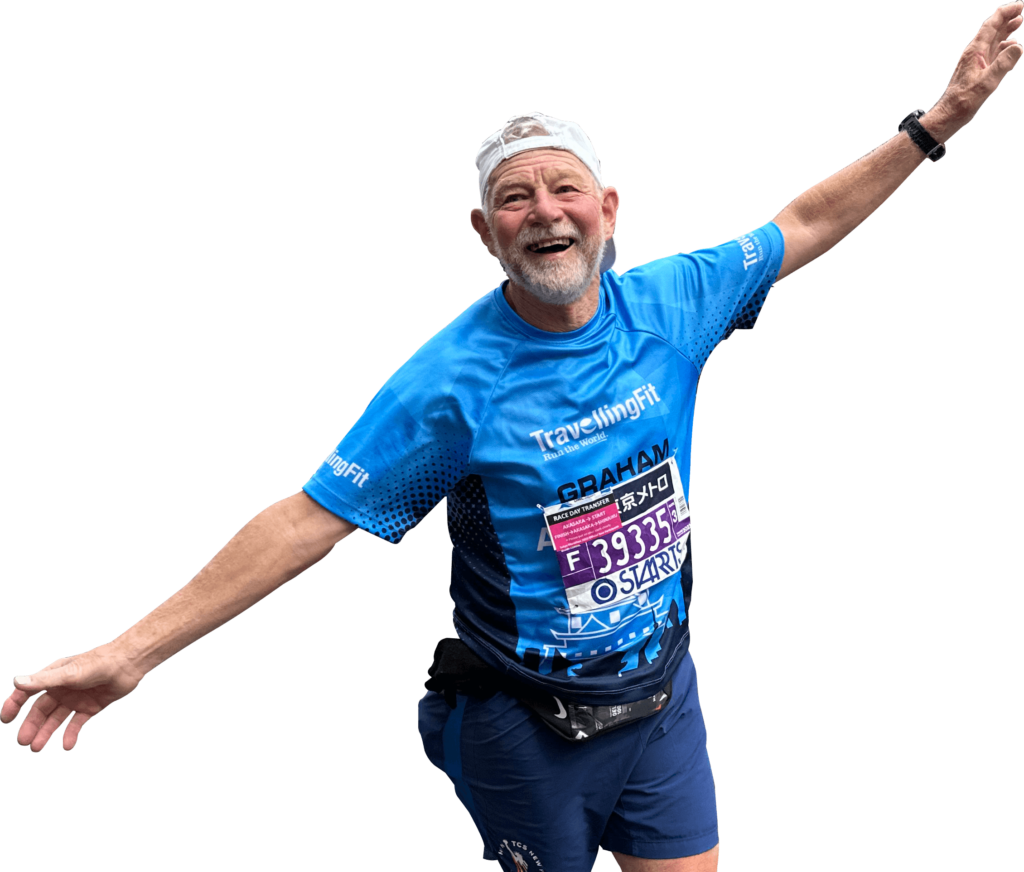
The Course
The Iceland Volcano Marathon and Half Marathon both start at the foot of the mighty Hverfjall volcano crater. The route leads runners west across a road composed of volcanic sand and gravel and onto the main road that encircles Lake Mývatn.
The next 2.5km are run on asphalt and lead to the unique lava field of Dimmuborgir, which means “Black Fortress.” An eruption roughly 2300 years ago created this vast expanse of black lava stacks and caves – folklore surrounding the region often associates it with the gates of hell. In Dimmuborgir, the route follows narrow trails in a counterclockwise circle and then runs under the Gatklettur Arch (pictured).
From there, the trail narrows to a single track for the following 1.1 km. The flora here is extremely fragile and it is very, very important that all runners exercise extra caution and stay on the trail. Do not pass each other if it means stepping off the trail and do make room for each other!
As the trail widens up again, the mighty Hverfjall crater is now front and center. Running clockwise around it, we’ll pass the start line just before heading up the crater itself. Rising more than 100 meters, the view from the top offers a 360-degree view of the North Volcanic Zone. The route follows the rim of the crater all the way around – a 3 km circuit – and back down the same trail we came up.
Continuing north, the route comes very close to the Jardbödin Nature Baths and, although the baths can’t be seen from the route, the volcanic activity below the surface can be seen in the steam rising from the ground.
The marathon runners will now split away from the half-marathon runners as they turn right and run along the east side of the Hverfjall crater. The surface changes to pitch black volcanic sand and lava rock in a landscape that looks more like the moon than the earth.
Shortly after passing the halfway mark, the marathon route changes back to a gray-green landscape consisting of lava rock and shrubbery and leads runners to the bottom of the Ludent crater. At the 25km mark, runners start an out-and-back stretch of approximately 2.5 km, running along a line of smaller craters that popped up more than 2000 years ago as the volcanic activities moved south.
There is a 5-hour cut-off point at 31.5 km, meaning that runners who did not reach 31.5 km within 5 hours of the start will be removed from the race and driven back to the finish line. After the cut-off point, runners will find themselves on another tough, shorter hill leading back onto the black volcanic sand, and then following the same path back towards the Jardbödin Nature Baths and merging again with the half marathon runners.
The final 4 km begin with about 1.5 km on asphalt, taking us past the Grjótagá cave, which was made famous in Game of Thrones (although the cave cannot be seen from the route).
The last 2.5 km stretch is run on a gravel road will lead runners to the finish line at the Vogar Ferdathjonusta.
Notes:
When passing places of public interest it is important to keep in mind that this race doesn’t have exclusivity in the area and all roads and sights are open to regular visitors and locals too. With the early start, however, most of the route will be fairly empty.
Do not forget that this is first and foremost an adventure. We are far away from comforts of home and this makes it impossible to offer services at the same level usually provided in city marathons.
Race Information
Entry Fees
Your entry to the Iceland Volcano Marathon is included in the cost of your Travelling Fit package
Qualifying Times
There are no qualifying times for the Iceland Volcano Marathon but all participants must be 18 years or over on race day
Start Time
The Iceland Volcano Marathon & Half-Marathon are both scheduled to start at 7:30am. The quarter-Marathon will start shortly after.
Please note that last-minute changes to the start times may occur.
Cut-Off Times
For marathon runners, a 5 hour 15 minutes cut-off point lies at the 32 km mark.
Runners still on the route after the time is up, or haven’t passed the cut-off point in time, will be picked up by a race official or medical car and driven back to the finish area.
There is an overall time limit of 7 hours.
Race Timing
The races will be timed using BIB-chip. The BIB-chip is attached on the back of the bib number and will record each runners net finishing time.
Do not fold or bend the bib number as it could damage the chip.
Race Packets
International runners will receive their goodie bags in Akureyri on the second day of the tour.
Included in the goodie bag will be your bib number (please do not bend – your timing chip is on the back!), re-usable Iceland Volcano Marathon water bottle, and your race t-shirt.
All runners will receive two bib numbers and both must be worn during the race. The large bib must be attached to the front of your body and the small one is for your back.
Pace Setters
There are no official pace setters for the Iceland Volcano Marathon
Aid Stations
The exact placement of the water stations may change, but expect them to be close to the below table:
- Station A: 4.5km
- Station B: 8.5km
- Station C: 10.5km and 14.5km (4.5km for quarter marathon runners)
- Station D: 17km (7km for quarter marathon runners) and 38.5km
- Station E: 21km and 33.5km
- Station F: 25km and 30km
- Station G: Finish line
Remember that we run in wild and unspoiled nature and cups, empty bottles and other rubbish should be put in the litter bags at the water stations – please do not litter in nature!
Personal Refreshments and Clothing
Even though it is late summer, it will not be “warm” by most people’s definitions. In general, it is a good idea to pack two sets of running clothes; one for warmer/decent weather conditions and one for cold/rainy weather conditions. Your “cold” set should consists of long sleeved shirt and long tights/running pants, as well as a wind-protective jacket.
Your “warm” set could be shorts and T-shirt, but the running jacket may come in handy too as the weather can change rapidly. An extra jacket can be placed and dropped at the personal supply station at the foot of Hverfjall crater.
In terms of footwear, the Iceland Volcano Marathon can be run in a pair of normal running shoes, but trail running shoes are recommended if running for a top placement.
It is possible to deposit bags with personal items in the finish area for use after the race. Runners will also have a personal supply drop on the route at Aid Station 3. Please mark your bag clearly with your name and bib number.
Although the luggage area is manned, depositing personal belongings in the area is entirely each runner’s responsibility and the Iceland Volcano Marathon organizers are not responsible for loss or damage of personal belongings.
Expo
There is no Expo associated with the Iceland Volcano Marathon
Finishes T-Shirts, Medals and Certificates
All finishers receive a medal. A small, symbolic prize is given to the winners for men and women.
Marathon Photos will take personal photos of all runners. The photos can be purchased after the race from www.marathon-photos.com
Your Finisher’s Certificate will be available for free download.
Please note that there is no prize money.
Weather Conditions
The Icelandic late-summer is not known to be warm…
Expect temperatures between 5-11 degrees Celsius. If we are lucky, we may see the temperatures rise to 15 degrees Celsius.
Icelandic weather is notoriously fickle, and rain is to be expected at some point during your stay, so prepare for a little bit of everything.
Others
Half Marathon – 21.1km
Quarter Marathon – 10.55km


